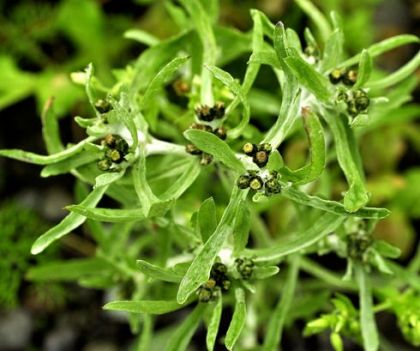Apart from the centre, this plant is fairly frequently found throughout the country, mostly on ground which is sandy, damp, bare and also often on disturbed pathways. An annual, it grows to about 20cm high, being silvery-green and woolly, and it sends out little branches which end in clusters of 3-10 yellowy-brown flowers. In fact, each of these flowers (3-4mm long) is comprised of little yellow disc florets which are surrounded by brown bracts. The alternate greyish leaves are narrow and woolly all over, and some reach beyond the flowerheads. Blooming from July to October, this is a native plant and it belongs to the family Asteraceae.
I found this plant growing on Valentia Island, Co Kerry in 2009 and I photographed it there in two locations – one at Knightstown and the other by the Lighthouse Café at Dohilla.
If you are satisfied you have correctly identified this plant, please submit your sighting to the National Biodiversity Data Centre




